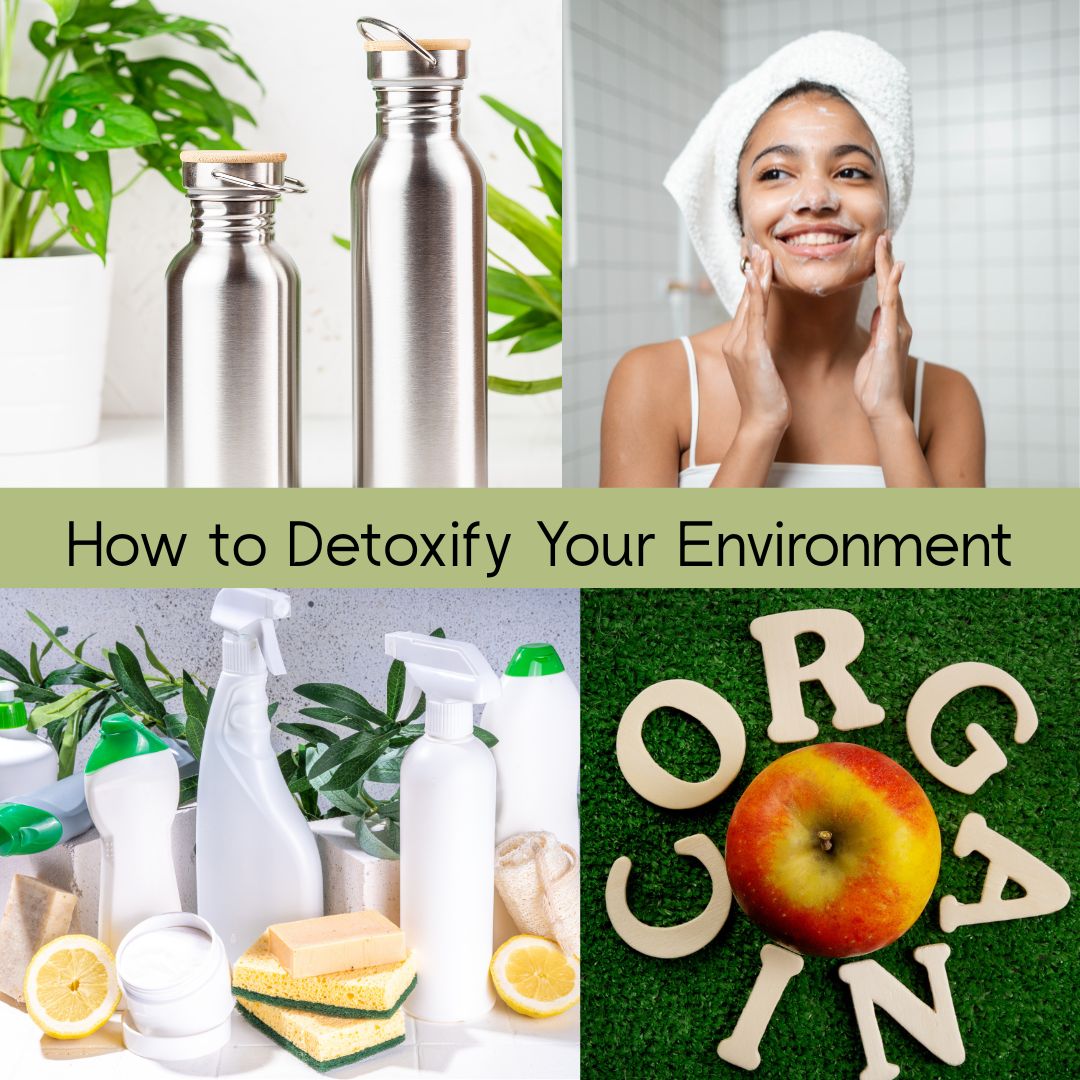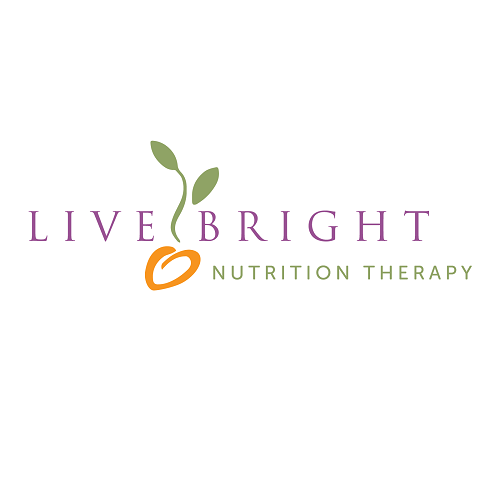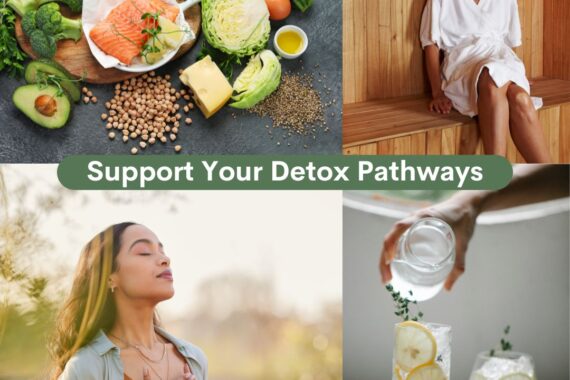
Where Environmental Toxins Hide: 8 Areas to Detox for Better Health
Our bodies are equipped with natural detox systems, but the reality is—we live in a world where our exposure to environmental toxins has far outpaced what our ancestors ever faced. From pesticides in food to pollutants in the air and chemicals in everyday products, our bodies are working overtime. The good news is, you don’t need a fancy cleanse or a drastic lifestyle overhaul. You can start reducing your toxic burden with simple shifts in your daily choices.
1. Eat Clean to Lighten the Load
Food is one of the biggest sources of environmental toxins—and one of the most impactful areas you can change. Pesticide residues on fruits and vegetables, hormones and antibiotics in conventionally raised meat and dairy, and harmful compounds from charred or processed foods all add to the burden. Even packaging matters: plastics and cans often contain chemicals like BPA and phthalates that can leach into what we eat and drink.
Checklist:
- Buy organic produce, especially the items that are more heavily sprayed (check the EWG’s Dirty Dozen and Clean 15 lists for guidance).
- Choose pasture-raised, grass-fed meat and wild-caught fish, steering clear of species high in mercury like swordfish and bigeye tuna.
- Limit ultra-processed and packaged foods.
- Avoid microwaving food in plastic—use glass or ceramic instead.
- Store food in glass or stainless steel containers.
2. Filter Your Water for a Cleaner Drink
What’s in your water? Depending on where you live, your tap water might contain traces of chlorine, fluoride, heavy metals, pesticide runoff, or even pharmaceutical residues. While municipal water systems aim to meet safety standards, these standards don’t always account for long-term, low-level exposure to a mix of chemicals.
Checklist:
- Invest in a high-quality filter for your drinking water (pitcher, under-sink, or reverse osmosis).
- Don’t forget your shower, either. Install a shower filter to reduce chlorine and other chemical exposure through skin and lungs. Hot water opens pores and makes it easier to absorb chlorine and other chemicals through the skin or lungs. A shower filter is an easy addition that can make a big difference.
- Drink from stainless steel or glass bottles instead of plastic water bottles. They’re not only a source of microplastics and endocrine-disrupting chemicals, but they also create unnecessary waste.
- Avoid single-use plastic water bottles to reduce microplastic and chemical exposure.
3. Freshen Up Your Indoor Air
Indoor air can be surprisingly more polluted than outdoor air, thanks to a buildup of volatile organic compounds (VOCs), off-gassing furniture, synthetic fragrances, and cleaning fumes. Scented candles and air fresheners may smell nice, but they often release hormone-disrupting chemicals that linger in the air and settle into dust.
Checklist:
- Open your windows daily to get fresh air circulating—even a few minutes can make a difference.
- Use houseplants like peace lilies, snake plants, or spider plants to filter the air naturally.
- Consider using a HEPA air purifier, especially in the bedroom or living room or any space you spend a lot of time.
- Choose low-VOC paints, furniture, and mattresses.
- Choose unscented products or naturally scented ones made with essential oils. Avoid synthetic air fresheners and scented candles. Artificial fragrances are often made of hormone-disrupting chemicals.
- When it comes to furniture, bedding, or paint, look for low-VOC or naturally derived options.
4. Clean Up Your Cleaning Products
Many conventional cleaning products contain harsh chemicals, artificial fragrances, and known hormone disruptors. These can linger on surfaces, pollute indoor air, and come into direct contact with skin. Switching to gentler, non-toxic alternatives can dramatically cut down your exposure—and your home will still sparkle. You don’t have to buy expensive “green” cleaners either. You can make your own with simple ingredients like vinegar, baking soda, and essential oils. It’s also helpful to look for brands that are transparent about their ingredients and free from unnecessary additives.
Checklist:
- Replace conventional cleaning sprays with natural or DIY cleaners (vinegar + baking soda is a great combo).
- Look for brands that are transparent about ingredients and free from artificial fragrances, bleach, ammonia, and quaternary ammonium compounds.
- Use reusable cloths instead of disposable wipes to reduce waste and chemical use.
- Avoid air fresheners and synthetic “odor eliminators,” as most of these contain hormone-disrupting chemicals.
5. Detox Your Personal Care Routine
From lotions and deodorants to shampoo and cosmetics, the products we use daily can be a major source of chemical exposure. Many of them contain ingredients like parabens, phthalates, formaldehyde releasers, and synthetic fragrances, which can accumulate in the body over time. Since your skin absorbs much of what you put on it, it’s smart to simplify your personal care routine and opt for cleaner products.
Checklist:
- Read ingredient labels and steer clear of parabens, phthalates, triclosan, and synthetic fragrances.
- Choose “fragrance-free” or products scented with essential oils and botanical extracts.
- Simplify your routine with fewer, multipurpose products. My favorite is Branch Basics.
- Use the EWG’s Skin Deep database or the Think Dirty app to check the safety of personal care items.
6. Reduce Plastic Use
Plastic is everywhere, but it can leach hormone-disrupting chemicals like BPA, BPS, and phthalates into your food and drinks—especially when heated. Reducing your plastic use, particularly around food, is a powerful way to cut down on toxic exposure.
Checklist:
- Store food in glass, stainless steel, or silicone containers.
- Ditch plastic wrap in favor of beeswax wraps or glass lids.
- Skip plastic straws and utensils—carry your own reusables if needed.
- Avoid buying canned foods with BPA-lined cans.
- Use reusable stainless steel or glass water bottles.
- Use reusable grocery bags at stores.
- Also, avoid heating food in plastic or putting plastic containers in the dishwasher, as heat can cause them to break down and release harmful compounds.
7. Be Mindful of What You Breathe, Wear, and Touch
Detoxing your environment also includes everyday exposures you might not think twice about—like your laundry detergent, dry cleaning chemicals, flame retardants in furniture, or even the pesticides tracked in on your shoes. These sources may seem small, but they add up over time.
Checklist:
- Use natural laundry detergents free of synthetic fragrances and optical brighteners.
- Skip fabric softeners and dryer sheets—use wool dryer balls instead.
- Remove shoes at the door to avoid tracking in outdoor pesticides and pollutants.
- Choose clothing made from organic cotton or natural fibers when possible.
- Look for “green” or wet-cleaning alternatives to conventional dry cleaning.
8. Minimize Your EMF Exposure
Electromagnetic frequencies (EMFs) are a growing concern in our modern world. With cell towers, WiFi, Bluetooth, smart devices, and 5G technology all around us, we are surrounded by a constant stream of invisible frequencies. While research is still ongoing, some studies have raised concerns about long-term exposure to low-frequency EMFs and their possible connection to health concerns like sleep disturbances, hormone disruption, fatigue, and even cancer. Some people are especially sensitive to EMFs and may notice symptoms such as headaches, dizziness, brain fog, anxiety, or tingling sensations. While we can’t eliminate EMFs entirely, there are practical steps we can take to reduce our exposure and protect our health—especially while we rest and recharge at night.
Checklist:
- Put your phone on Airplane Mode when not in use. When your phone is on Airplane Mode, it stops emitting constant signals in search of a network or Bluetooth device. Use this feature overnight or during the day when you don’t need to be connected.
- Keep your phone away from your body. Avoid carrying your phone in your pocket, bra, or directly against your skin. Distance makes a difference—the further away, the lower the exposure.
- Use speakerphone or wired earbuds for calls. EMF intensity drops significantly with distance. Keep the phone away from your head by using the speakerphone or a wired headset instead of Bluetooth.
- Avoid using your phone when the signal is weak. Phones emit more radiation when they’re trying to connect. Try to use your phone in areas with a strong signal—near windows or outdoors.
- Turn off WiFi and Bluetooth at night. Reducing nighttime exposure is one of the most impactful things you can do. If you can, turn off your WiFi router and set devices to Airplane Mode before bed.
- Keep your phone out of the bedroom. If possible, charge your phone in another room, or keep it across the room and on Airplane Mode while you sleep.
- Use wired internet connections at home. Ethernet cables create zero EMFs and offer a fast, secure connection—great for home offices or for kids’ learning devices.
- Explore shielding options with caution. Products like EMF-blocking phone cases, grounding mats, or shielding curtains exist, but their effectiveness can vary. If you’re considering these, work with a professional to determine what’s right for your space.
Making changes to reduce your everyday exposure to environmental toxins doesn’t have to be overwhelming. By taking small, consistent steps—whether it’s choosing organic foods, swapping out cleaning products, or being more mindful of what you bring into your home—you’re supporting your body’s natural detoxification systems and creating a healthier environment for yourself and your loved ones.
If you’re ready to take things a step further and give your body a boost, my 14-Day Reset and Refresh Cleanse is a great way to help clear toxins, support your detox pathways, and experience more energy, better digestion, improved sleep, and clearer thinking. It’s a simple, nourishing reset your body will thank you for.



